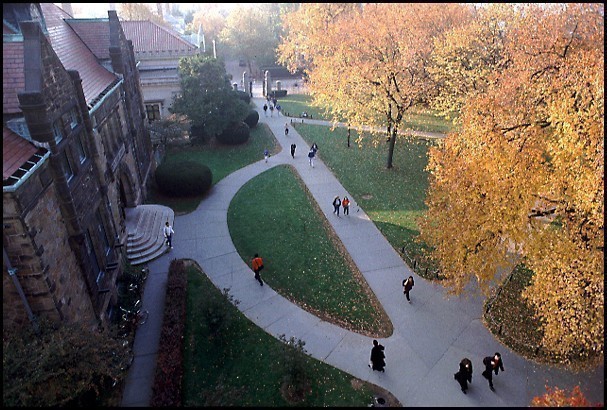
PROVIDENCE – Brown University admitted the lowest percentage of applicants – 8.5 percent – in its history this week, despite its applicant pool being its third largest ever at 30,397.
The offers made include 1,970 applicants to Brown’s regular decision pool and 610 students admitted in December through the early decision program, for a total of 2,580 prospective students, according to information provided by the university.
The university said that history and English rejoined the list of top 10 concentrations that students plan to pursue at Brown.
The remaining top 10 intended concentrations include engineering, biology, computer science, biochemistry, international relations, economics and political science, with nearly 6 percent of the admitted students undecided on their future concentrations.
“The members of the Class of 2019, drawn from a remarkably deep, distinctive and talented pool of applicants, will bring to the Brown community not only significant accomplishments and unique aspirations, but also vast potential and an enormous diversity of experiences,” James Miller, dean of admission, said in prepared remarks.
Students have been admitted from all 50 states, with the top five states being California, New York, Massachusetts, New Jersey and Texas. Students from 85 nations also are represented, with the top countries being China, United Kingdom, Canada, India and Korea.
Of the admitted candidates, 59 percent attend public high schools, while 41 percent attend either private or parochial high schools.
And, 95 percent of admitted candidates are in the top 10 percent of their high school class. Sixty-one percent of the admitted students also intend to apply for financial aid. Forty-five percent of applicants self-identify as African American, Latino, Native American or Asian American.
Of 512 applicants, 17 students were admitted to the Brown-RISD dual degree program, a 3.3 percent admission rate, and out of 2,216 applicants, 90 students were admitted to Program in Liberal Medical Education, a 4.1 percent admission rate. The latter program is an eight-year program leading to both a bachelor’s and an M.D. – doctor of medicine – degree.
In other news, Bloomberg News reported that all Ivy League colleges accepted a lower percentage than ever – even as they encouraged more to apply.
Harvard University said it accepted a record-low 5.3 percent of hopefuls after attracting 37,307 applicants as it heightened recruiting with a new social-media campaign. Admission rates for the seven other Ivies, which told students their verdicts Tuesday, ranged from 6.1 percent at Columbia to 14.9 percent at Cornell.
Stanford University, on the West Coast and not in the Ivy League, surpassed them all for a second year. It reported Friday that it had admitted 5 percent of applicants.
The competition for top slots shows no sign of abating as students seek prestige as well as financial-aid packages that tend to be more generous at these wealthy schools.
Heightening the frenzy, colleges reach out to students with a barrage of glossy brochures and emails. This year, at least a dozen – including University of Pennsylvania and Dartmouth College, which each said they admitted about 10 percent of applicants – extended their application deadlines, encouraging even more students to apply.
Dartmouth saw a rebound in applications from last year’s admissions cycle, when they dropped 14 percent after the school received media attention for drinking and sexual-assault allegations. Since then, the school has announced efforts to improve its campus culture. Applications for this fall’s class rose 6 percent to 20,504.
Colleges say their outreach reflects efforts to assemble the strongest classes possible and reach out to underrepresented students. Still, because of these marketing efforts, seniors should eye the low acceptance rates with some skepticism, said Michael Motto, who worked as assistant director of undergraduate admissions for two years at Yale, which admitted 6.5 percent.
“There is an inflation factor in terms of those numbers,” said Motto, now a private admissions counselor in New York. “But it is important for students to realize these are very selective places who do see the best and brightest students applying from across the world.”
Material from Bloomberg News was used in this report.












